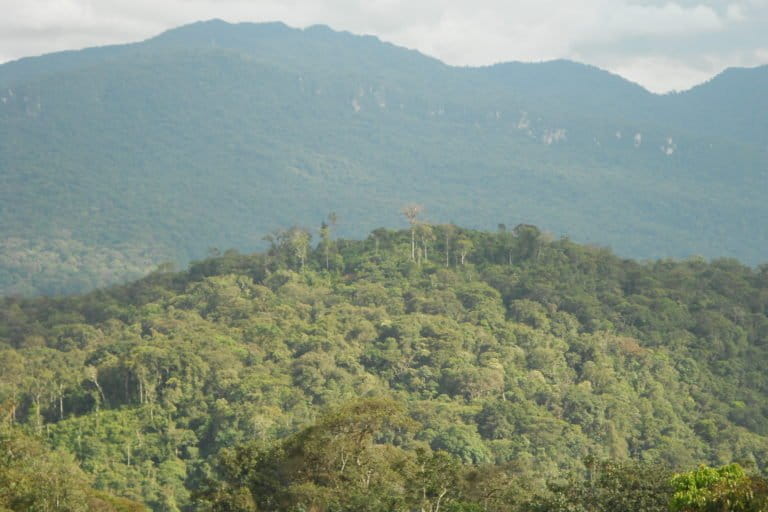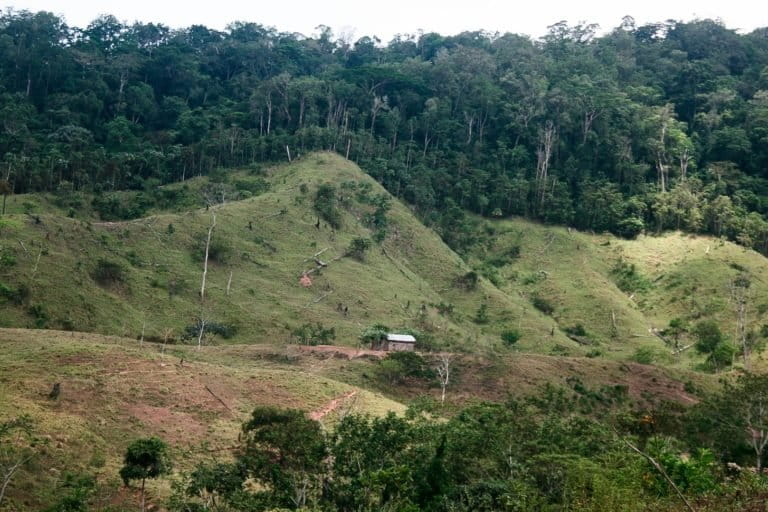The top stories from our Spanish-language service, Mongabay Latam, investigated Colombia’s roadkill rates; Chile’s marine forests; and Chinese energy projects in Ecuador.
Mammals pay highest toll on Colombia’s highways
Plans to double Colombia’s highway network by 2035 represent a major threat to wildlife conservation. A roadkill app and research have documented some 11,000 roadkill incidents, with mammals most affected, particularly the Andean white-eared opossum (Didelphis pernigra). Researchers cite various low-cost strategies, but connectivity corridors could be the best conservation solution, provided planners know where to place them.

Seaweed market imperils Chile’s marine forests
The unfettered growth of the world’s seaweed market has put Chile’s marine refuges in a “situation of high vulnerability,” according to a National Fisheries Service report. Overharvesting of seaweed is clearing marine forests that are crucial for the reproduction and refuge of more than 150 species, including sharks, manta rays and shellfish. Ninety percent is exported as dried, cut seaweed to China, Japan, Norway and France for spices, cosmetics, pharmaceuticals and animal feed.

The outsize heft of China’s energy investments in Ecuador
The rapid growth of China’s presence and investments in Ecuador has resulted in political and economic dependence on Beijing, a recent report says. Since 2009, Chinese companies have invested $12.49 billion in the country — more than the loans issued by multilateral lenders in the same period ($10.165 billion). The human rights and environmental track records of the Chinese companies has prompted the Office of the U.N. High Commissioner for Human Rights to consider recommendations from indigenous Amazonian groups in evaluating China in its recent Universal Periodic Review.

Shark fin soup slashes Peru’s shark populations
If current levels of fishing continue, there will probably be no more female hammerhead sharks in Peru’s waters in 30 to 50 years, says Peruvian marine biologist Sebastián Hernández. “Probably your children’s children will play with plastic sharks like we played with dinosaurs, since they will be extinct,” he said. The Chinese appetite for shark fin soup continues to drive the market, and Peru is the biggest exporter of shark fins in Latin America.

Peru’s newest protected area is home to over 500 species
Monte Puyo, Peru’s newest conservation area, is one of the country’s largest wildlife reserves with more than 500 species living in this Amazon cloud forest. These include the critically endangered yellow-tailed woolly monkey (Oreonax flavicauda) and the ochre-fronted antpitta (Grallaricula ochraceifrons), a bird found only in Peru.

Honduran preserve loses 40 football fields of forest a day
Cattle ranching has taken a massive bite out of the Río Plátano Biosphere Reserve in Honduras, a UNESCO World Heritage Site. In the past five years the reserve has lost 390 square kilometers (150 square miles) of forest, mostly for cattle pasture, out of a total area of 5,250 square kilometers (2,030 square miles). That equates to a loss of 22 hectares (54 acres), or about 40 football fields, every day during that period.

Read these stories in their entirety in Spanish here at Mongabay Latam.
Banner image of a kelp forest courtesy of NOAA Office of National Marine Sanctuaries.
